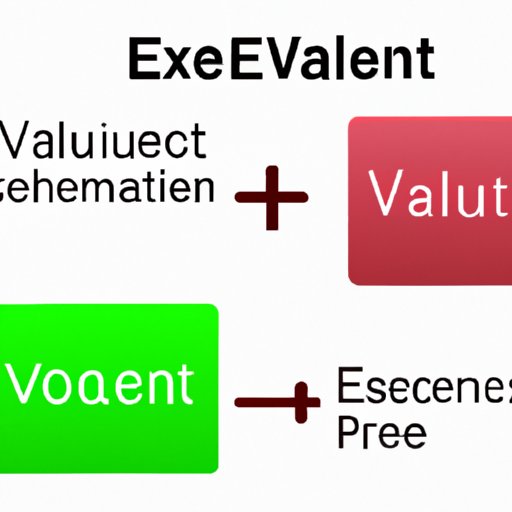
I. Introduction
Expected value is a statistical concept that helps us make informed decisions by calculating the probability of an event and multiplying it by its potential outcome. Through this article, we will explore how to calculate expected value and its practical application in real life scenarios. The article is divided into different sections so that readers can easily follow and understand the concepts.
II. Walkthrough of How to Calculate Expected Value with Examples
Expected value is the sum of the outcomes of a given event multiplied by the probability of each outcome. For example, suppose a coin is tossed, and we win $10 if it lands heads up and lose $5 if it lands tails up. The probability of winning $10 is 0.5, and the probability of losing $5 is also 0.5.
To calculate the expected value, we multiply each outcome by its probability and add them together. In this scenario, the expected value is: (0.5 x $10) + (0.5 x -$5) = $2.5. This means that, in the long run, we can expect to win $2.5 every time we play this game.
III. Advantages and Limitations of Expected Value
The expected value model has numerous benefits. For instance, it can provide a more accurate outcome of future events, enabling us to make informed decisions. However, the model has its limitations, such as its dependence on probability and lack of consideration for external factors influencing an event’s outcome. For example, suppose a company wants to calculate the expected value of a new product launch’s potential profit, and it relies solely on the model’s calculations. In that case, it might not consider factors such as competition and market trends, leading to inaccurate predictions.
IV. Expected Value Calculations in Real Life
The expected value model can be helpful in various real-life scenarios. For example, in gambling, we can calculate the expected value of a game to determine if it’s profitable or not. Similarly, in insurance, expected value can help insurance companies make better decisions regarding coverage and pricing. In investments, we can use expected value to assess the potential return on investment. Finally, in online shopping, expected value can help us compare prices and choose the best deal.
V. Expected Value vs Average Value
The average value is the sum of all the outcomes divided by the number of outcomes. Expected value takes probability into consideration while calculating the outcome. For example, suppose a worker earns $10 per hour and has a 50% chance of getting a $5 bonus. The average value of their hourly rate would be $10.5. However, the expected value would be: (0.5 x $15) + (0.5 x $10) = $12.5. Expected value considers the probability of each outcome occurring.
VI. A Beginner’s Guide to Expected Value
The expected value model is a powerful tool that can be used to make better decisions. It involves multiplying the potential outcome of an event by its probability to arrive at an estimated outcome. We can use this model in various fields such as finance, business, engineering, and healthcare to make informed decisions.
VII. How to Apply Expected Value to Decision-Making
Expected value can be used to make informed decisions in various fields. For example, in finance, expected value can help determine the potential return of investments. In business, it can be used to calculate the expected profit for a new product launch. In engineering, expected value can help evaluate the potential risk of a project. In healthcare, expected value can be used to determine the best treatment options for patients.
VIII. Conclusion
Expected value is an essential statistical concept that can help us make better decisions in various fields. It involves calculating the probability of an outcome and multiplying it by its potential outcome. The expected value model can be useful in gambling, insurance, investments, and online shopping. Although the model has its limitations, its benefits make it an essential tool for decision-making.





